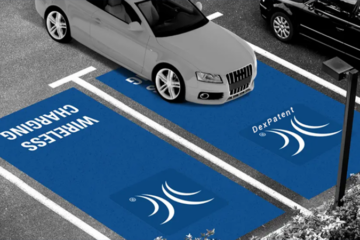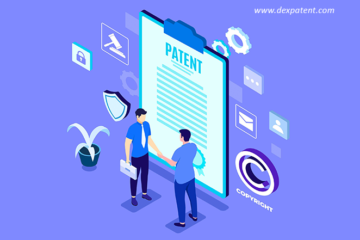The Patent Theft Dilemma: Can Your patents be stolen?

Patents are a crucial form of intellectual property protection granted to inventors and innovators. A patent provides its owner the legal right to exclude others from making, using, or selling an invention for a limited period of time. As the significance of technology in our daily lives continues to grow, so does the importance of patents. As technology’s significance in our daily lives continues to rise, so does the value of patents. Consequently, there has been a surge in the number of patent-related disputes. Nonetheless, determining whether patents can be stolen requires a more in-depth analysis.
In this blog, we’ll delve into what is patent theft and also, provide insights on how inventors and creators can ensure the security of their valuable intellectual assets.
What is Patent Theft?

Patent theft refers to various actions, such as copying an invention without the permission of the inventor/owner, reverse engineering a patented product, or stealing a patented idea. All of these actions can be deemed illegal and may result in legal consequences for both the rightful patent owner and the perpetrator of the theft. The Legal Consequences are:
- Loss of Intellectual Property Rights
- Financial Losses
- Damage to Reputation
- Stifling Innovation
How to Prevent Idea Theft: Defending Your Inventions
In literal sense of the word, patents cannot be stolen. This is because, patent is a legal document that is recorded with a government agency, (e.g.: USPTO, EPO) and can only be transferred through legal means, such as licensing or assignment.
However, patents can be illegally used by others through various means, for example, someone can infringe a patent by making, using, selling, or importing an invention that is covered by the patent without permission. This can be done intentionally or unintentionally and can occur in a variety of ways.
One way that patents can be stolen/infringed upon is through reverse engineering. Reverse engineering is the procedure of dissecting a component of an existing product to comprehend its functionality and the method used for its creation. While reverse engineering itself is not illegal, using the information gained to create a competing product without the patent holder’s permission can be considered patent infringement. If an inventor does not take steps to protect their invention, such as by filing for a patent, someone else can potentially reverse engineer the invention and make or use it without permission.
Another way that patents can be stolen/infringed upon is through independent invention. Independent invention transpires when someone develops an invention that is comparable or identical to one that is already patented, without prior knowledge of the existing patent. In this scenario, the second inventor may be unaware that they are infringing on an existing patent, but they can still be held legally responsible for damages if they are found to have infringed.
So, to protect your patents from being stolen / infringement, there are several steps that you can take:

-
File for a patent:
The first step to protect your invention is to file for a patent. This will give you exclusive rights to your invention and allow you to prevent others from making, using, selling, or importing it without your permission.
-
Use non-disclosure agreements (NDAs):
If you intend to disclose your idea to someone, such as a company that could assist in its realization, you can have them sign a Non-Disclosure Agreement (NDA).
-
Conduct regular patent searches:
Conducting regular patent searches can help you identify potential infringers and take action to prevent infringement
-
Monitor the marketplace:
Monitoring the marketplace can help you to identify potential infringers who may be selling or using your patented invention without your permission
-
Enforce your patents:
If you believe your patents have been infringed upon, take legal action to enforce your patents and protect your rights.
Real-life example of patent infringement / theft and the measures taken to address it
-
The Smartphone Patent Battle between Apple vs. Samsung:
In this era of technology, one of the most well-known cases of patent disputes involves the rivalry between Apple and Samsung regarding smartphone technology. Apple accused Samsung of replicating certain design and functional aspects of its iPhone, which triggered a series of legal battles that extended over several years.
-
Theft and Accusation:
Apple claimed that Samsung’s smartphones copied certain design aspects, such as the rounded edges and grid of icons on the home screen, which Apple argued were unique features of the iPhone. They also alleged that Samsung’s devices infringed on specific utility patents related to functions like pinch-to-zoom and bounce-back scrolling.
Measures Taken:
-
Lawsuits and Legal Action:
Apple initiated legal proceedings against Samsung in multiple countries, alleging patent infringement and seeking compensation. Samsung responded with counterclaims, alleging that Apple had infringed on some of its patents as well.
-
Court Decisions and Settlements:
The legal dispute led to numerous court decisions in various countries. In some cases, courts ruled in favor of Apple, finding Samsung guilty of patent infringement. In other instances, courts ruled in favor of Samsung. The legal proceedings brought significant attention to the issue of patent infringement in the tech industry.
-
Financial Compensation and Licensing Agreements:
In certain cases where courts ruled in favor of patent infringement, Samsung was required to pay Apple significant financial compensation for damages. Additionally, the two companies reached licensing agreements, allowing Samsung to use some of Apple’s patented technology by paying licensing fees.
-
Impact and Lessons Learned:
The Apple vs. Samsung case highlighted the importance of protecting intellectual property in the tech industry and the potential consequences of patent infringement. It emphasized the need for companies to carefully evaluate their products to ensure they do not infringe on existing patents.
Key Takeaways:
The Apple vs. Samsung patent battle serves as a significant example of the complexities and challenges associated with patent theft and the measures that can be taken to protect intellectual property rights. In summary, the following points can help prevent patent theft in potential scenarios:
-
Thorough Patent Analysis:
One should conduct comprehensive patent searches before developing and releasing new products to ensure they are not inadvertently infringing on existing patents.
-
Prompt Legal Action:
If there is suspicion of patent infringement, it is crucial to take swift legal action to safeguard your intellectual property rights.
-
Licensing Agreements:
In some cases, settling disputes through licensing agreements can be a way to address patent infringement while allowing both parties to continue their operations
-
Innovation vs. Imitation:
The case underscored the differentiation between authentic innovation and imitation. Companies should give top priority to the development of distinctive products and technology.
In conclusion, although patents cannot be physically stolen, they can be violated through unauthorized actions like using, manufacturing, selling, or importing the patented invention. Additionally, when you possess a patented invention, it is imperative to undertake the requisite measures to safeguard it and seek guidance from legal experts if you suspect any patent theft or infringement. By following these measures, you can guarantee the protection of your inventions and the preservation of your rights.












0 Comments